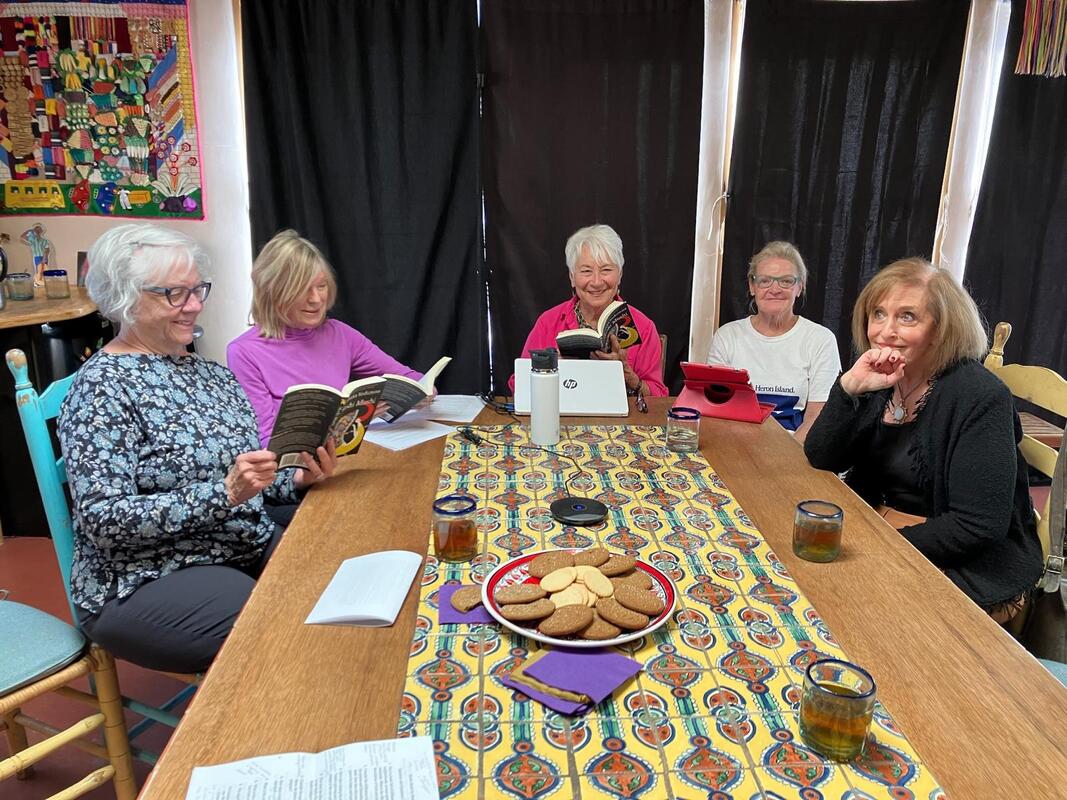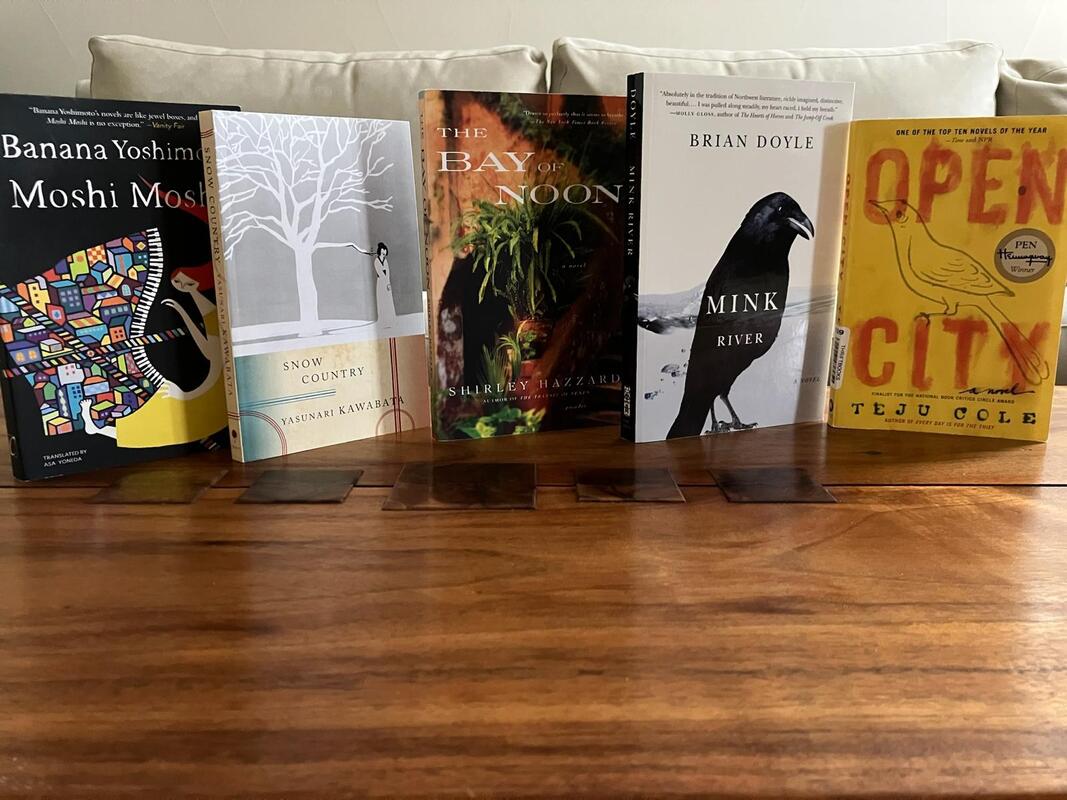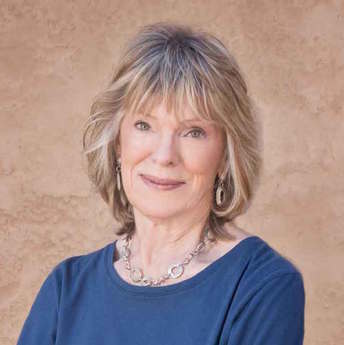|
When my friend Joan told me about a new book club, I was jubilant! I had never been in a book club and here was one that would meet in the Las Campanas clubhouse, less than a mile from where I live. My euphoric bubble burst when Joan added, “I’m afraid it’s filled.” A few nights later, dinner companion Tori said, “Shirley, my Spanish professor at the community college told me that she’s facilitating a book club at Las Campanas. If you can join, you should. She’s fabulous!” After a flurry of emails – first to facilitator Sharon Franco and then to the book club co-founder – I was invited to join the Las Campanas University Book Club when it was one-third of the way through a list of six books for its Saints and Sinners series. They had already discussed Camus’ The Fall and The Magician of Lublin by Isaac Bashevis Singer. Next up for discussion: The Power and the Glory by Graham Greene. “Our theme for the Saints and Sinners series is,” wrote facilitator Sharon Franco, “‘What does it take to be good?’ or maybe ‘What does it mean to be a good person in this complicated world?’ or maybe even, ‘If we’re not good, are we bad?’ Each of the six books we’ll be discussing will explore this theme in its own way, but each book has its own rich context, and we’ll definitely take that into account as well in our discussions.” Despite my delight and longing to stretch both mind and heart, my stomach was churning. I’d been a history, not English or American Lit major. A couple of weeks before joining the club, I received this heart-warming email from Sharon: Hi, Shirley, Welcome to the group! I’ll send you soon the materials I sent out for the first two books to give you some idea of what we talked about if you want to read or reread those books. In our upcoming discussions we may refer back to these earlier readings and authors occasionally for comparison/contrast purposes. But no problem if you simply want to jump in with the rest of the books on the list, beginning with the Graham Greene. So glad to have you join us! Best, Sharon In her pre-meeting questions, Sharon wrote: “Once again, as with our first two readings, we have a flawed protagonist. Inevitably you will, as before, have strong feelings about him, positive or negative. This time, in addition to evaluating his behavior and his character, please think about the context Greene has placed him and consider why Greene might have chosen such a character in such a context in this novel, considered by many to be his best. What do you think Green was exploring/investigating/examining in this work?” Any qualms I felt initially dissipated as I found myself thoroughly engaged by Sharon’s provocative questions and riveted by the insights of other members of the group. Our two-hour meetings were a combo of in-person and Zoom, which Sharon deftly handled. Meeting once a month, we concluded the Saints and Sinners series with a discussion of The Painter of Battles by Arturo Perez-Reverte. “Be aware,” Sharon said in preparation for discussion, “that some readers find the beginning of this novel a little slow (most of his books tend to be fast-paced intrigues), but I assure you that things pick up soon enough, though this isn’t a book of action so much as a kind of moral/philosophical inquiry into war, violence and the moral dilemmas a war correspondent faces.” Earlier in the series, we’d discussed Home by Marilynne Robinson and Purple Hibiscus by Chimamandu Ngozi Adichie. In discussion questions for Home, Sharon included a two-minute tribute to the author by Barack Obama and a review/discussion of Home in The New York Times. In supplementary material for Purple Hibiscus, she mentioned a TED talk by Chimmamandu on why everyone should be a feminist. “She’s won the Orange Prize and the MacArthur Foundation Genius Award, among others. She’s a kind of celebrity, but mainly because she’s a highly respected author.” Based on our votes and preferences, we took a summer break and picked up again in September with a new series of six works featuring “The Novella.” Sharon scheduled three meetings in the fall (September, October and November) and three months in the spring (February, March and April). Although we’re still known as The Las Campanas University Book Club, we now meet in Sharon’s casita, which is equipped with Zoom, and our membership has expanded to include persons outside of Las Campanas, including a few from out of the state! The six novellas we read were loosely connected to the theme of family relations, particularly involving spouses, lovers, parents and children. “We will also be examining the novella form itself,” wrote Sharon, “characterized by Joyce Carol Oates as follows: “Henry James described the novella as the ‘the blessed form.’ It is also a very difficult, even hazardous form, neither a novel in miniature nor a pumped-up short story, but something quite distinct, if indefinable, with its own particular challenges and possibilities.” Here are the six novellas: The Wife of Martin Guerre by Janet Lewis; The Lover by Marguerite Duras; The Age of Grief by Jane Smiley; Tell Me a Riddle by Tillie Olsen; No One Writes to the Colonel by Gabriel Garcia Marques; and The Lost Daughter by Elena Ferrante. After last summer’s break, we welcomed more new members and based on our preference for focusing on “The Power of Place,” Sharon selected another series of six novels: September – Snow Country by Yasunari Kawabata October – Moshi Moshi by Banana Yoshimoto November – The Bay of Noon by Shirley Hazzard February – The Pick-up: A Novel by Nadine Gordimer March – Mink River by Brian Doyle April – Open City by Teju Cole “I had a hard time choosing among all these great titles,” Sharon wrote, “but I opted for variety. This is a mix of 20th and 21st century works, male and female authors, and a variety of styles and settings.
“I chose to begin with Kawabata’s Snow Country in part because it’s the shortest of all the books and thus I’m hoping it shouldn’t be too hard for you to get it and read it before our first meeting. I’m thinking that it’s a work you might find enigmatic (or even off-putting – I’m anticipating some of your comments : ), which is in part a cultural issue. I’ll be sending out more material about it later, but as you read, think about the haiku form (Nobelist Kawabata is celebrated for bringing the haiku form into fiction), concentrate on the intense descriptions of setting, and consider the way the emotions conjured by setting are related to the characters; you’ll notice that plot isn’t a major factor here exactly. I’m hoping reading this work first will hone your sensibilities for later works, and also that you’ll find it soothing to read of snow and cold during this long heat spell.” In April, we wrapped up our series on “power of place” with Teju Cole’s provocative Open City. After a summer break, we’ll pick up again with a new theme and a list of Sharon’s picks for discussion. Stay tuned!
0 Comments
Leave a Reply. |
Author BLOG
I'm Shirley Melis. You may know me as Shirley M. Nagelschmidt, Shirley M. Bessey and now, Shirley M. Hirsch. Each reflects a particular phase of my life. Banged-Up Heart is a slice of my life's journey and in telling my story, I'm giving voice to my long silent "M" by reclaiming my maiden name, Shirley Melis. Archives
January 2024
Categories
All
|



 RSS Feed
RSS Feed